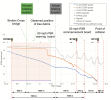What fraction of the total standing signal stock is hundreds of signals though?
Aren't there tens to hundreds of thousands of signals on the system in total?
Without context its hard to tell if hundreds of signals is a huge problem or not.
I don’t know the actual numbers. I only have limited information for one area. But I do know that for this area, before 2010 the number of signals reported was considerably lower compared to this year. And that before Network Rail existed, the number of reports for this area were even lower, back then it was very occasional. Last year and this year, the number reported in my area was insane.
It’s possible that nationwide the number is in the thousands. But you are missing my point. My point is two fold. Firstly that the problems caused by vegetation are getting worse each year and secondly that Network Rail know about the problems. They know that vegetation is a problem. I’m talking about senior mangers knowing about this.
It’s a safety risk if it results in a reduced sighting distance for signals. It’s a risk to staff working on the infrastructure. And now, it’s absolutely clear that its another real risk to trains where it results in rail head contamination. Leaves on the line are not a joke.
The railway already does record where they experience regular reports of low adhesion. Information on known sites is already available.
The real problem is that Network Rail is limited in what maintenance it can do. And a factor in this is the funding of the railways. The senior mangers on maintenance have an impossible job. Their budget is not increased, but the costs go up. And they know that in the real world, they actually need more resources, not less. It’s normal for them to be running over budget despite trying to stay within budget.
Oh, and on the subject of the costs of vegetation clearance, yes the railway does use modern tools. So a small team over a year can made a considerable difference. But long term, for this to be effective, it has to be consistent. Year after year. If you don’t keep on top of it, once you fall behind, if not sorted out soon, the costs skyrocket.
Fitting trains with improved brakes only mitigates against low adhesion. It doesn’t solve any of the other problems caused by vegetation. The railway can only spend each pound once. How much would it cost to modify every item of rolling stock? Which existing budget would this money come from?
If the amount of money spent on vegetation clearance was increased enough, that would in time deal with most of the problems caused by vegetation. The resources will still be limited, so known problem areas and critical locations should be prioritised.

